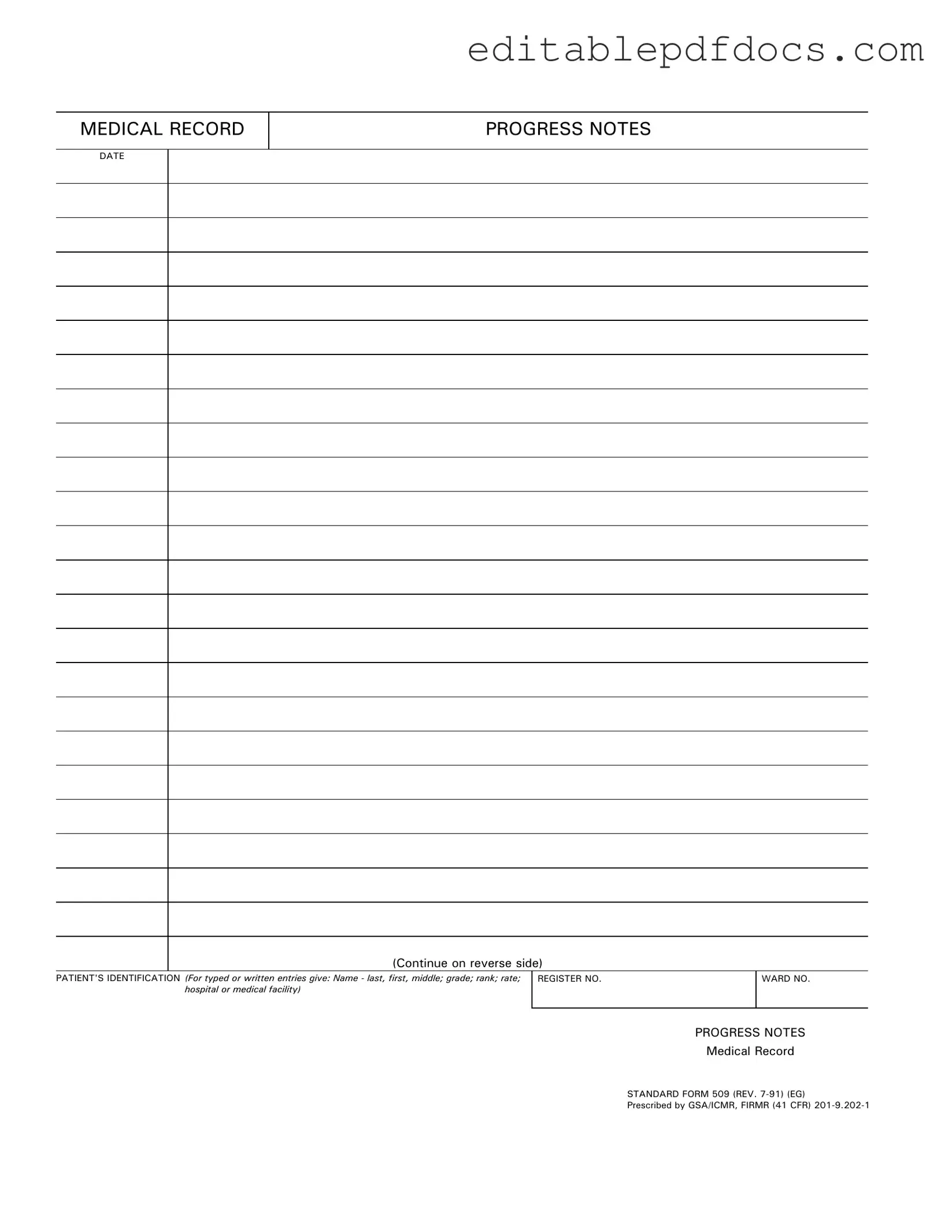Filling out the Progress Notes form accurately is crucial for maintaining comprehensive medical records. One common mistake is failing to include the date on the form. Without a clear date, it becomes difficult to track the timeline of a patient’s care. This oversight can lead to confusion and may impact treatment decisions.
Another frequent error involves the patient's identification. Individuals often neglect to provide complete information, such as the patient's full name, grade, rank, or rate. Incomplete identification can hinder communication among healthcare providers and may affect the continuity of care.
Many people also overlook the importance of the register number and ward number. These identifiers are essential for organizing and retrieving patient records efficiently. Omitting this information can lead to delays in accessing necessary medical history.
In addition, some individuals fail to use the correct standard form. Using an outdated or incorrect version can cause discrepancies in record-keeping and may violate institutional policies. It is important to ensure that the most current form is being utilized.
Another common mistake is the lack of detailed progress notes. Brief or vague entries do not provide adequate information for other healthcare providers. Detailed notes are essential for understanding the patient’s condition and the rationale behind treatment decisions.
People sometimes write in a way that is difficult to read. Illegible handwriting or poor formatting can lead to misinterpretations of the notes. Clear and concise writing is necessary to ensure that all team members can understand the information presented.
Some individuals may also forget to sign the form. A signature is a critical component that validates the notes and confirms the author’s accountability. Without a signature, the notes may not be considered official or may be questioned during audits.
Another mistake is not reviewing the completed form before submission. Failing to double-check for errors can lead to inaccuracies that may affect patient care. A thorough review can catch mistakes and ensure that all required information is included.
Lastly, individuals sometimes neglect to consider the confidentiality of the information being recorded. It is essential to handle patient information with care to protect their privacy. Adhering to confidentiality guidelines is not only a legal requirement but also an ethical obligation.
